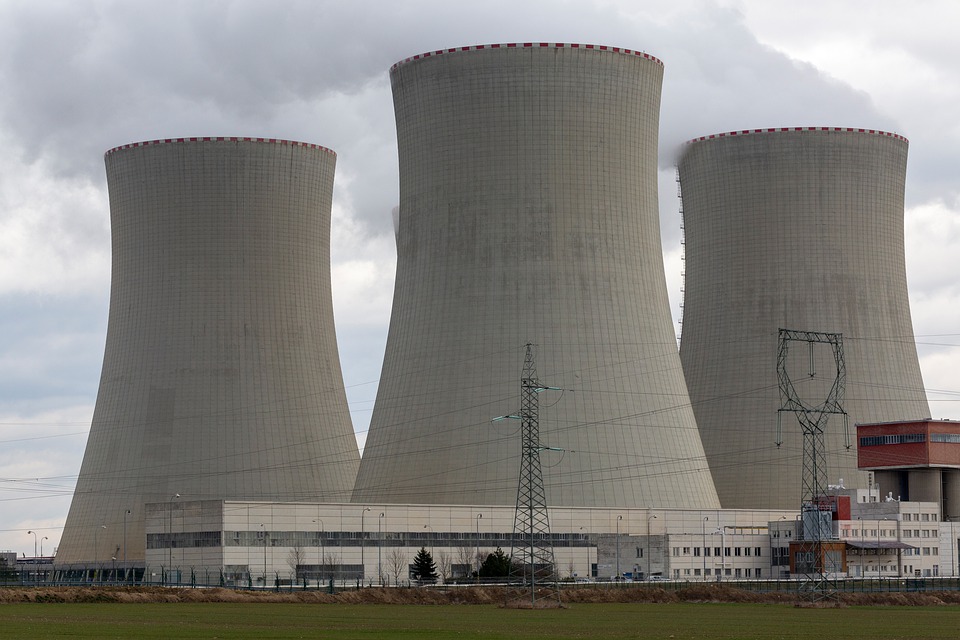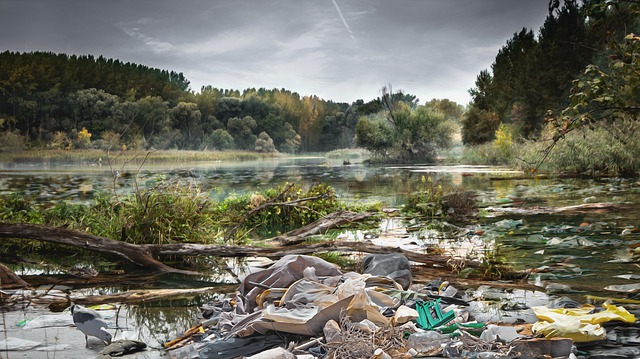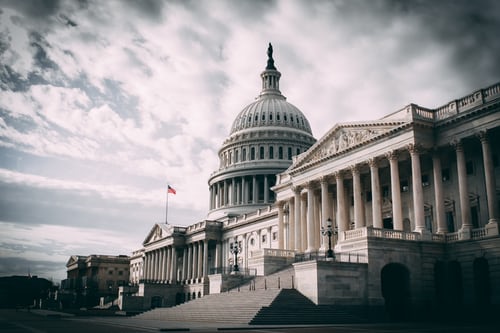By Rachel Porter, Publishing Project Leader for Save The Water™ | March 18, 2019
The 1950s in the United States. A time of American baseball and Jackie Robinson. Of Elvis Presley and rock n’ roll. And of atomic energy and uranium mining.
Seemingly overnight, the nuclear arms race of the Cold War sparked a mining boom in the American Southwest. Along with this economic opportunity came irresponsible mining practices and loose regulation that led to devastating environmental impacts, particularly on water sources.
Arguably, no one has suffered at the hands of these impacts more than Indigenous people, especially the Navajo. The mining industry stripped their land of its resources. Rendered their water contaminated. And left in its stead hundreds of abandoned mines that continue to harm the people and their land today.
History and Background of Uranium
In 1938, German scientists discovered that splitting the uranium atom would release untold amounts of energy. This new source of energy could power cities. Or be harnessed as atomic weapons.
Throughout World War II and the subsequent Cold War with the Soviet Union, the US stockpiled millions of tons of uranium to fuel their own atomic research and development. Consequently, mining operations sprung up across the nation.1
However, as the Cold War threat abated, so did the need for uranium. Thousands of mines were abandoned. Mining companies walked away, leaving the contaminated sites where they stood.1,2
These sites’ potential for widespread sickness and environmental devastation is two-fold. As a heavy metal, uranium causes chemical toxicity. Exposure through contaminated drinking water or ingestion can diminish bone growth and cause kidney failure, among other ailments.
However, uranium is also radioactive. In other words, it spontaneously emits particles or waves known as radiation. When humans come into contact with this radiation, it can lead to a variety of cancers, fertility complications, and early death.
But still the most significant problem comes with time. Uranium continues to be radioactive for thousands of years. Because of this, mining sites can be dangerous for decades and generations after they stop operations.3
Today, more than 160,000 abandoned mines scatter the Western US. These sites are generally not marked or fenced off and can be identified only through memory or mining records.4
Indigenous People and Uranium Mining
From the beginning, Indigenous tribes were especially swept up in the uranium whirlwind.
With intimate knowledge of their land, many tribes led the effort in scouting for uranium deposits. Subsequently, significant sources were discovered in the Four Corners, the place where Colorado, Utah, Arizona, and New Mexico meet. This region is also home to the largest concentration of Native Americans in North America, including the Navajo, Hopi, and Zuni, among a number of other tribes.1
Moreover, mining jobs promised a reprise from poverty rampant on reservations and a doorway into the larger US economy.5,2 Many tribe members eagerly accepted mining work and moved their families to mining sites without understanding the risks. This was particularly the case for the Navajo Nation.
Between 1944 and 1986 miners extracted over 4 million tons of uranium on Navajo territory alone.7 Hundred of mines sprouted up across the reservations. And thousands of Nation members flocked to what they believed to be an economic opportunity for their people.
But despite research dating back to the 1930s showing the harmful effects of mining, the Navajo were intentionally never informed of the risk.
Furthermore, many of them did not speak English, and there is no word for radiation in the Navajo language.2 Thus, they were isolated from the increasingly abundant knowledge about the dangers of uranium exposure not only to their health but also their environment.
Uranium Mining Exposure Mechanisms and Environmental Costs
Until the 1970s, uranium was primarily acquired through open-air pits. Mining companies would extract rocks containing uranium from the ground and then crush them into a powdered dust. Thereafter, a liquid solution separated the uranium from the other matter in the rock.
This scrap material was then stored in open-air pits called “tailing ponds.” Here it commingled in a toxic slurry with other chemicals and heavy metals such as arsenic and mercury, which can also cause serious health problems. What’s more, tailings include about 85% of the uranium’s radioactivity.3
Tailing ponds and other mining practices continually devastated surrounding water sources. The finely ground tailing dust easily blew away from the site into the environment. Miners legally dumped untreated mine waste onto the ground where it would seep into the aquifers below. Or in other cases miners even directly dumped into nearby surface waters.4
Furthermore, major spills and leaks were not uncommon. For example, when a tailing pond burst in 1979, 93 million gallons of tailing liquid poured into the Puerto River.1 And as recently as 2015, a spill released nearly 3 million gallons of toxic waste water into the San Juan River and across Navajo land.
All in all, uranium mining has resulted in the contamination of an estimated 40% of Western US headwaters. Water sources that nearly every Native American tribe relies on for drinking, farming, and cultural practices.4
Impacts of Uranium Mining on the Navajo
To this day, nearly a third of Navajo members still have high levels of uranium in their urine, and cancers are widespread.6 Moreover, one disease is so prevalent among the Navajo that it is named after them: Navajo neuropathy.
A peripheral nervous disease associated with mothers drinking contaminated water during pregnancy, this disease affects children almost exclusively. The average life expectancy for a child born with Navajo neuropathy is just 10 years.7
But more than just the devastating health impacts, the Navajo people also continue to suffer an ongoing water crisis.
Navajo are 67 times more likely than other Americans to live without running water or a toilet. As of 2017, more than 54,000 had no access to clean water sources at home, forced instead to travel to nearby cities and collect water in spare bottles and buckets. Round trips that can span upwards of 100 miles and are costly and time-intensive.5 Alternatively, some families resort to unregulated water sources such as wells. But these too carry contamination risk.4,9
In an effort to alleviate these struggles, the federal government has removed thousands of cubic yards of mining site waste since 2008. And the Radiation Exposure Compensation Act of 1990 continues to provide “government funded, in-home care to several hundred Navajo affected by [uranium] contamination and exposure.”6
Moreover, the Navajo Environmental Protection Agency has identified sites with the “highest levels of radiation and closest proximity to humans” for priority clean-up. So far, they have closed off and cleared contaminated soil from dozens of sites. But the process will take decades and hundreds of millions of additional dollars to complete.7
Meanwhile, nearly 600,000 Native Americans still live within 10 km of an abandoned mine.4
Indigenous People and Water
Undoubtedly, uranium mining in the US is just one narrative in the long history of Indigenous people and water contamination.
The story of the Great Sioux Tribes, for example, is all too similar. In 1877 gold mining took over their land. It polluted their water resources with toxic levels of arsenic. And that pollution persists to this day.4
And few can forget when in 2017 thousands of protesters along with representatives from more than 100 tribes stood together against the Dakota Access Pipeline. A project that many believed would threaten the major water source of the Standing Rock Sioux Tribe.10
These accounts constitute only a small part of a greater reality. That repeatedly throughout history Native American water sources have been sacrificed for economic gain, with little to no regard for the environmental impacts or health consequences of the people who rely on them.
Though clean-up efforts in recent years are steps in the right direction, the history and continued suffering of Indigenous people like the Navajo cannot be dismissed. It is an ongoing story. A fight. And a challenge. One that thousands of Native Americans continue to live every day.
What Can You Do to Be a Part of the Solution?
- Find out if you live near an abandoned mining site. Or if your water sources could be affected.
- Test your water regularly, especially if you live in the Four Corners or near an identified mining site.
- Learn about the disproportionate struggle of Native Americans or other disadvantaged groups in your country.
- Use your voice! For example, volunteer for Save the Water™. Or write your local constituents about issues you are passionate about. Every action matters. Every voice counts.
References
- Laura Nader. 2010. “Energy Reader.” Blackweel Publishing Ltd. Print.
- Doug Brugge and Rob Goble. September, 2002. “The History of Uranium Mining and the Navajo People.” American Journal of Public Health, 92(9), 1410-1419. https://www.ncbi.nlm.nih.gov/pmc/articles/PMC3222290/
- Dale Dewar, et al. May 2013. “Uranium Mining and Health.” Canadian Family Physician, 69(5), 469-471. https://www.ncbi.nlm.nih.gov/pmc/articles/PMC3653646/
- Johnnye Lewis, et al. April 26, 2017. “Mining and Environmental Health Disparities in Native American Communities.” Current Environmental Health Reports, 4(2), 130-141. https://www.ncbi.nlm.nih.gov/pmc/articles/PMC5429369/
- Jackie Friedman. “Land of Poison.” The Week. https://theweek.com/captured/753345/land-poison
- Laurel Morales. April 10, 2016. “For The Navajo Nation, Uranium Mining’s Deadly Legacy Lingers.” NPR. https://www.npr.org/sections/health-shots/2016/04/10/473547227/for-the-navajo-nation-uranium-minings-deadly-legacy-lingers
- Gabriel Scarlett. “On Poisoned Land.” https://gabrielstephenscarle.atavist.com/on-poisoned-land
- Jerry Schoeppner. December, 2008. “Groundwater Remediation from Uranium Mining in New Mexico.” Southwest Hydrology. http://www.swhydro.arizona.edu/archive/V7_N6/feature3.pdf
- Brian Palmer. October 15, 2015. “Why Are We Allowing Uranium Miners to Pollute Groundwater in Drought Zones?” Pacific Standard. https://psmag.com/environment/why-are-we-allowing-uranium-miners-to-pollute-groundwater-in-drought-zones
- Erin Brodwin. January 25, 2017. “Protesters say a leak in the Dakota Access pipeline, which Trump just advanced, could be a ‘death sentence’.” Business Insider. https://www.businessinsider.com/trump-dakota-access-pipeline-dapl-water-environment-2017-1





